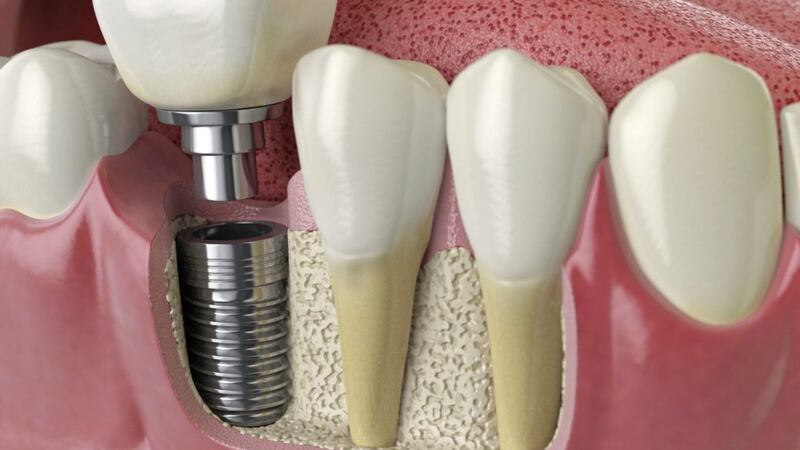PEOPLE in Northern Ireland and Britain are a gappy bunch. Around 27 million people in the UK overall have at least one missing tooth. Many are turning to dental implants to fill these spaces.
The dental implant market has been predicted to grow at a 9.7 per cent yearly growth rate between 2014 and 2020. That’s according to a new report from Persistence Market Research (PMR). The report suggests that some of the main reasons for the increase in demand for dental implants include advancements in technology such as 3D imaging which make treatments more predictable, a rising cosmetic demand from an ageing population and an increase in dental implant tourism to have implants fitted in different parts of the world.
While dental implants have become an everyday therapy in the dental practice they still involve unfamiliar treatments to patients. Having a tooth removed, while not the most pleasant experience, is a normal concept to most people. When it comes to implant placement, people can be unnerved at the idea of making a hole in the jawbone and placing a titanium implant into it.
However, the way we imagine things is not often how they pan out in reality. Our minds can run amok when we have never experienced something before. For instance, most patients agree that having a back tooth pulled is often more bothersome than having an implant placed. This is because there is less movement; having an implant placed is like having a filling but with less water, which is easier to deal with.
Also, when you are having an implant fitted, the dentist is not working in your mouth continuously. There are more breaks; people can relax their mouth closed, which is always appreciated.
One of the greatest beneficial leaps for patients that I have seen since I qualified 20 years ago, is the advancement in dental anaesthetics. Now we have double-strength anesthetics to deeply numb the teeth and jawbones while also allowing us to numb fewer parts of your mouth for maximum comfort.
What’s even more lucky for implant patients is that it’s actually easier to numb up the jawbone than a tooth due to the way the nerves are.
The other two words that set emotions flying are 'bone grafting'. A scary concept it may sound; however, again, that’s not reality – the bone is just added in like sugar granules to plump out the area for increased support.
Bone plumping actually doesn’t add any additional pain to the procedure – on occasion, just a bit more bruising and swelling afterwards which medications can minimise.
Speak with your implant dentist if you have any concerns regarding your implant treatment.








